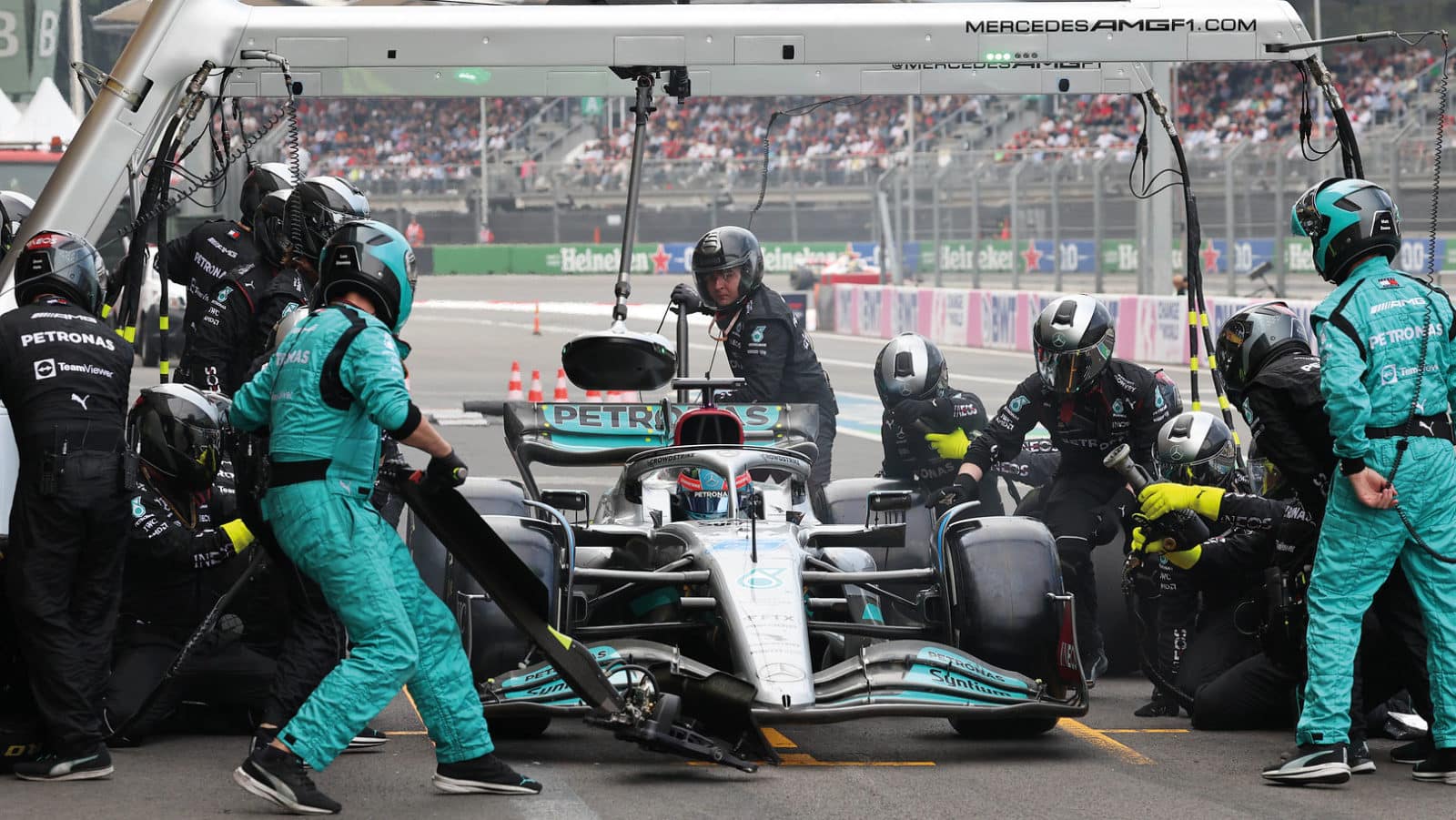Thin air of Mexico catches out Mercedes
We know that atmospheric conditions affect the state of the track, but Mexico is more affected than most. Mark Hughes explains how Mercedes tripped up over track temperatures

Compound error: Mercedes’ tyre predictions led its strategy astray in Mexico
Grand Prix Photo
The effects of the high-altitude location of Mexico’s Hermanos Rodriguez track are many and varied – and not always predictable. That extends even to its impact upon race strategy. The temperature is greatly influenced by atmospheric thickness. Because there is less air above the ground surface at higher altitudes, there is less atmospheric absorption of solar energy. This absorption of sunlight is a contributing mechanism to track temperature anywhere, but less so here. So at high altitudes the effect of the sunlight on surface temperatures is much more direct than in lower-altitude places. The track temperature tends to soar much more quickly with relatively modest sunlight and will drop much more suddenly when the sunlight fades. That played a major part in the uncertainty around what was going to be the best strategy.
The track was much grippier at lower temperatures than high, but those temperatures were varying wildly throughout the weekend, even within the same day. This would have implications upon tyre degradation and which compounds were best suited to the track – and therefore profoundly impact upon strategy. It was not at all clear to the teams going in if the race was going to pan out as a one-stop or a two.
Mercedes was not confident it could get good stint lengths from the soft (C4) tyre. It reasoned therefore that if the race turned out to be a one-stop, that it would not be able to use the soft, that it would be obliged to go medium/hard for the two stints. Only if it turned out to be a two-stop did they believe the soft could be used. They did not want, therefore, to start on the softs as they believed that would commit them to a two-stop without knowing if that was going to be the optimum strategy. Hence its decision to start on the mediums for both George Russell and Lewis Hamilton, with the option to fit the soft if it looked like becoming a two-stop race.
“In choosing soft tyres off the grid, Red Bull had called it right”
When Red Bull saw Mercedes remove the blankets from its tyres on the grid, it was puzzled. By its own analysis of the practices, the soft comfortably had enough range to incorporate a one-stop strategy if required. Hence it had started both Max Verstappen and Sergio Pérez on softs, for their accelerative qualities off the grid and opening lap performance. Red Bull had called it right, Mercedes wrong. The track temperature dropped very quickly from an initial 47°C to 39°C, giving the soft compound a much easier time and making the hard less competitive.
The race was indeed a one-stopper and Verstappen was able to run the softs for a 25-lap opening stint before switching to the mediums for the remaining 47 laps. The chasing Hamilton ran his initial mediums only four laps longer than Verstappen’s softs and after switching to the hards exited 7sec behind – on a much slower tyre.
In other words, because the soft tyre stood up well, the Mercedes was always on a slower tyre compound than the Red Bull.
Once it had seen how the soft had performed, could Mercedes not have switched Hamilton to a two-stop and thereby ran two sets of softs? The problem with that was it would have lost him track position to the one-stopping Pérez – so he would have to pass two Red Bulls on track to win. Given that the Mercedes lagged well behind the Red Bull on straightline speed, that was not a feasible option.
It might have tried to do so with Russell, who did the first stint in fourth place, behind Pérez and had plenty of space behind him to drop into by the time of the first stops, but the worry at Mercedes was that this would then trigger Pérez into responding with a covering second stop of his own which in turn might have allowed him to have caught and passed Hamilton.

